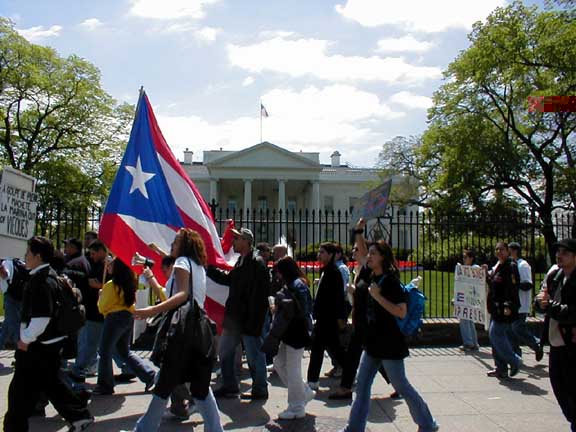|
WHY AND HOW DOES NONVIOLENCE
WORK?????
Within the theory of nonviolence it is recognized
that power is inevitable and is going to be an issue in all
political and social relationships. Therefore it is not a goal
of nonviolence to abolish power, but to redirect authority.
For purposes of clarity we will assume for now that political power
is held by a "ruler" this is simply to clarify some of the
fundamentals of nonviolence. Understand that when the word
"ruler" is used, in reality it can apply to a ruler,
president, governing body, majority opinion or multiple other things
depending on the situation.
There is one main strength which nonviolence has
over the ruler, the rulers political power is governed by the
people, without their cooperation he has no authority.
There are six main sources sources of political
power according to Gene Sharp which nonviolence attacks:
1. Authority�people feel
that the ruler/rulers have a right to control or govern them. (this
is a feeling and can therefore be withdrawn)
2. Human Resources�the
number of people who recognize this authority (by doing the above
this number decreases)
3. Skills and Knowledge� how
the skills and knowledge of the people can work with its needs (if
people refuse cooperation this also decreases)
4. Intangible
factors�moral/cultural beliefs of the people towards rule under
the person/persons/laws etc. (this is usually the reason for
nonviolent action beginning)
5. Material Resources�the
actual resources that the authority has power over ( money,
transportation, natural resources, etc) (this can not easily be
removed)
6. Sanctions�the ability of
them to be used against conflicts with the people and other
authorities ( people can use this against the ruler ex. jiu-jitsu)
All of these sources depend on the obedience of
the people. This is a strength of nonviolence in that, through
refusing to give this cooperation, the people can upset
the power of the authority in question. They then
can through their nonviolent action attempt to play on the sympathy
conjured in some of the rulers followers or take other action.
.
In
nonviolence, therefore, the people have several options to
withdraw the power and authority when they feel it is needed.
The three main choices are
1. Bureaucratic
obstruction�non-cooperation within the bureaucracy itself (a kind
of people within the bureaucracy do not have to obey and ultimately
again the �authority� yields to the will
of the others within the bureaucracy and the masses.)
2. Popular
Non-cooperation�when people don�t obey the laws or take mass
action
Several types of nonviolence according to
Gene Sharp are as follows:
Formal statements
Group representations
Symbolic Public acts
Pressures on Individuals
Drama and Music
Processions
Honoring the Dead
Public Assemblies
Withdrawal and Renunciation
These can be further summed up into
the categories we were given in class :
Protest and Persuasion
Non-cooperation
Interventions
Within each of the categories there are many
different types of nonviolent
action which may be taken
The overall success of nonviolence is usually a
result of any combination of these factors and methods. The
overall governing power rests in the hands of the people because it
is their submission which allows the authority necessary to govern.
|
